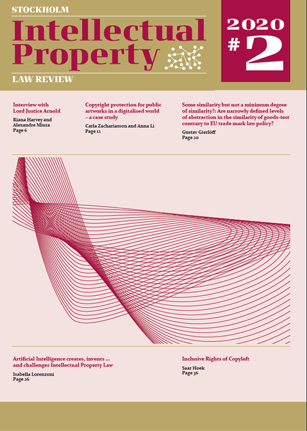Issue #2 – 2020
Editorial
The ongoing Covid-19 pandemic has the world in a severe grip, with national measures in Europe ranging from lockdowns to less severe restrictions. The world is waiting for a vaccine, and a promising breakthrough was reached when Pfizer/BioNtech published its first results in November 2020. Even though it is still unsure when the vaccine will be available, and to what extent a vaccine will contribute to the end of the coronavirus pandemic, it is a ray of hope in the current situation. Sweden has from the early days of the pandemic employed less severe restrictions than neighbouring countries, and this choice has been hotly debated in Sweden and around the world. But measures are in place. Many work from home, do not use collective transports and order all food through online services. With the death tolls still rising in November 2020, more severe restrictions are debated. In this time where the possibilities of travelling and meetings are more restricted than ever, we are turning to digital tools for work, education and social interaction. Digital platforms and online services offer makes it possible for many parts of society to continue working and studying, albeit in new ways. Workplace meetings are being replaced by virtual meetings, a new kind of space we all have had to adapt to. Suddenly your colleague reports the latest sales figures in new and exciting surroundings, for instance in front of the Golden Gate bridge in San Francisco, or in space. Or worse, all your colleagues’ cameras are turned off for your presentation, and your frame is the only one visible in Zoom.
Stockholm IP Law Review has also adapted to this virtual reality. The review is honoured and pleased to report that our 2020 seminar entitled “IP in the Digital Environment” was held as a virtual seminar on the 3rd of December, with more than 250 participants. The theme for the seminar was focused on the issue of website blocking injunctions in European law. The keynote address, “Website-Blocking Injunctions and Streaming Server-Blocking Injunctions: The State of the Art”, was delivered by Sir Richard Arnold, Lord Justice of Appeal at the Court of Appeal of England and Wales. Other speakers included Karin Cederlund, partner and advokat at Sandardt&Partners in Stockholm and Stefan Johansson, judge at the Patent and Market Court in Stockholm, who held presentations on “Website Blocking from the Swedish Perspective”. Eleonora Rosati, Associate Professor at Stockholm University addressed the topic of “Roasting the Host: From the Safe Harbour to the Direct Liability of Platforms in IP Cases”. The Stockholm IP Law Review is deeply grateful to speakers, panellists and participants who contributed to making this event such a success. Time will tell whether the 2021 seminar will also have to virtual, or whether we will be able to welcome you to a real-life seminar in Stockholm next year.
At Stockholm University, the Master of Laws (LL.M) in European Intellectual Property Law Programme is wholly conducted online for the year 2020/21. Since the start of the second wave of the virus, most other courses at the university are now also run online. Despite the challenges that this kind of education poses, notably the lack of social contacts between students as well as teachers, the new dedicated student editorial team at Stockholm IP Law Review has done an excellent work with creating this issue 2/2020, which you are now reading. Issue 2/2020 of Stockholm IP Law Review focuses mainly on copyright-related
issues and in particular such that concern use of copyrighted material in the digital environment. An important highlight of issue 2/2020 is of course the interview of Lord Justice Richard Arnold. Sir Arnold kindly agreed to be interviewed by our co-chief editors Riana Harvey and Alexandre Miura. His views on e.g. recent case law, IP law after Brexit and career matters are published in this issue. In addition, we are proud to publish the work of three of our Stockholm EIPL Master Programme alumni, namely Gustav Gierlöff, Isabella Lorezoni and Saar Hoek. Saar writes about the limits and rights conferred to so-called Free Open Source Software (FOSS) and their relation to copyright and patent rights respectively. Isabella focuses on the challenges posed by Artificial Intelligence to intellectual Property, an unsolved and ongoing conflict issue. As the only non-copyright article in this issue, Gustav is exploring the topic of likelihood of confusion in trade mark law, notably the issue of similarity of goods-test. Last but not least, Vinge associates Carla Zachariasson and Anna Li explain the scope of protection for copyright-protected public artworks published online in the form of photographs in Sweden against the background of two recent Swedish rulings. The editorial team at Stockholm IP Law Review hope you will enjoy this issue, and that you are keeping safe and staying healthy. And as a final reminder – don’t be that colleague who forgets to press the mute button!
Åsa Hellstadius & Frantzeska Papadopoulou

